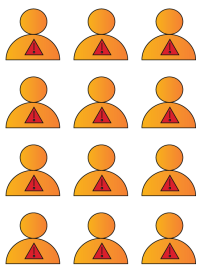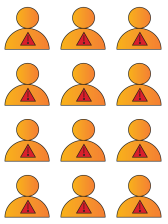Data breaches involving
lateral movement

Preventing Lateral Movement in Active Directory

Increase of Ransomware attacks utilizing credential access tactics


Compromised
credentials
on the dark web
Threat actors use lateral movement as an attack technique after they gain an initial foothold in an organization’s environment by compromising an end point, server, or application. After entering and controlling systems remotely, the adversary can infiltrate additional systems across the targeted environment, resulting in a transition from a localized threat to a full-scale organizational incident.
Lateral movement can lead to many things, including sensitive data theft and mass machine encryption for ransomware, to name a few.
In this eBook, you’ll explore the core components of lateral movement attacks in Active Directory and understand why they continue to cause a blind spot for security teams. We’ll also cover why traditional cyber security solutions like endpoint protection, network monitoring, and privileged access management (PAM) are not equipped to handle lateral movement threats that often center around identity weaknesses.
Lastly, get a peek into how the Silverfort Identity Security Platform eliminates these blind spots and prevents lateral movement attacks itsRuntime Access Protection.
What is lateral movement?
Increase of Ransomware attacks utilizing credential access tactics
Data breaches involving
lateral movement


Compromised
credentials
on the dark web

Preventing Lateral Movement in Active Directory

Threat actors use lateral movement as an attack technique after they gain an initial foothold in an organization’s environment by compromising an end point, server, or application. After entering and controlling systems remotely, the adversary can infiltrate additional systems across the targeted environment, resulting in a transition from a localized threat to a full-scale organizational incident.
Lateral movement can lead to many things, including sensitive data theft and mass machine encryption for ransomware, to name a few.
In this eBook, you’ll explore the core components of lateral movement attacks in Active Directory and understand why they continue to cause a blind spot for security teams. We’ll also cover why traditional cyber security solutions like endpoint protection, network monitoring, and privileged access management (PAM) are not equipped to handle lateral movement threats that often center around identity weaknesses.
Lastly, get a peek into how the Silverfort Identity Security Platform eliminates these blind spots and prevents lateral movement attacks itsRuntime Access Protection.
What is lateral movement?